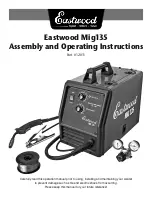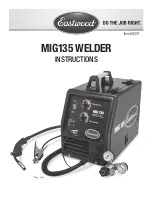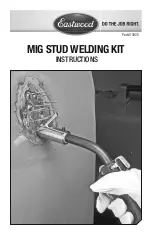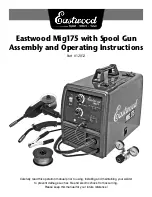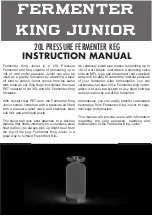
Rev. 6/26/2017
LLW, MANUAL
Copyright 2017 Vestil Manufacturing Co.
Page
4
of
16
Signal Words:
This manual uses SIGNAL WORDS to indicate the likelihood of personal injuries, as well as the probable
seriousness of those injuries, if the product is misused in the ways described. Other signal words call attention to uses
of the product likely cause property damage. The signal words used appear below along with the meaning of each
word:
Identifies a hazardous situation which, if not avoided, WILL result in DEATH or
SERIOUS INJURY. Use of this signal word is limited to the most extreme situations.
Identifies a hazardous situation which, if not avoided, COULD result in DEATH or
SERIOUS INJURY.
Indicates a hazardous situation which, if not avoided, COULD result in MINOR or
MODERATE injury.
Identifies practices likely to result in product/property damage, such as operation that
might damage the product.
Hazards of Improper Use:
We strive to identify foreseeable hazards associated with the use of our products. However, material handling is
dangerous. No manual can address every risk. Ultimately, the most effective means for preventing injury is for the
end-user to apply sound judgment whenever using this lifter.
Improper or careless operation might result in serious personal injuries. Always apply material handling
techniques learned during training.
Failure to read and understand the entire manual before assembling, using or servicing the product
constitutes misuse
.
Read the manual to refresh your understanding of proper use and maintenance procedures as
necessary.
Inspect the lifter before each use according to the instructions that appear on p. 14-15. DO NOT use the lifter
unless it is in normal condition.
Before using the lifter, inspect the area where it will be used. Look for conditions that affect the use of the lifter.
Regardless of whether the lifter is loaded or unloaded, DO NOT stand or travel under the deck.
Instruct others to stay clear of the device and the supported load during operation.
Avoid contact with moving parts during operation, i.e. the cable or cylinder, deck, wheels, casters, and rollers.
DO NOT allow people to ride on the lifter.
Failure to properly position a load on the deck might result in injury:
1. DO NOT exceed the capacity. Capacity information appears on label 287 as shown in “Labeling diagram” on p.
16 (also see appropriate “Product specifications” diagram and table on either p. 2 or p. 3).
2. ALWAYS properly center and evenly distribute the load. DO NOT handle off-center loads or loads that cannot
be centered.
3. Start/stop gradually to avoid upsetting the load on the deck. Strap loads to the deck if they might roll or slide.
4. NEVER tilt the lifter while carrying a load.
ALWAYS observe the deck while raising and lowering it. The deck should maintain levelness and should rise
smoothly. Watch for binding or jerky movement and listen for unusual noises. Tag the unit "Out of order" and do not
use it if you observe anything abnormal.
Only use this lifter on even, level ground. DO NOT transport loads across inclines or stairs.
Enlist a coworker to help you lift, load, and unload the unit whenever necessary.
DO NOT perform maintenance on this product UNLESS it is unloaded and the deck is lowered. If the unit requires
repairs, ONLY install manufacturer-approved replacement parts.
Before leaving the unit unattended, unload it and lower the deck.
DO NOT use the lifter UNLESS all labels are in place and readable (see “Labeling diagram” on p. 16).
DO NOT modify this product in any way. Modifying the lifter automatically voids the limited warranty and might
make it unsafe to use.

















